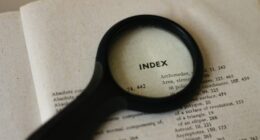The differences between paperback and hardcover books can be subtle but significant. If you’re on a budget or prefer lightweight books for travel reading, then paperbacks might be your go-to choice. However, if you appreciate sturdy book covers that will stand the test of time and look great on your shelves, then hardcovers are definitely worth investing in.
Paperback Books
(Photo by Karim Ghantous on Unsplash )

Paperback books are a popular choice for many readers due to their affordability and portability. Unlike hardcovers, paperbacks have a soft cover made of thin cardstock that is glued or sewn together with the pages inside. This makes them lightweight and easy to carry around, making them ideal for those who like to read on-the-go.
Despite being less durable than hardcovers, paperbacks can still hold up well if treated properly. They also tend to be more flexible and easier to open fully, which is great for reading comfortably in bed or on the couch without having to strain your wrists.
One downside of paperbacks is that they’re not as visually appealing as hardcovers since they don’t have dust jackets. However, some publishers opt for creative designs on the covers themselves instead.
Another advantage of paperback books is that they’re usually cheaper than their hardcover counterparts. This makes them an attractive option for budget-conscious readers who want access to great literature but don’t want it breaking their bank account.
While paperback books may not be as sturdy or aesthetically pleasing as hardcovers, they make up for it by being portable and affordable options suitable for everyone from casual readers to bookworms alike!
Hardcover Books

Hardcover books are also known as hardback or casebound books. As the name suggests, these books have a rigid cover made of thick cardboard wrapped with cloth or paper and then glued to the spine. The pages are typically sewn together and bound into the spine creating a sturdy book structure.
One advantage of hardcovers is their durability; they can withstand wear and tear better than paperbacks. They also provide more protection for the contents against moisture, dust, and sunlight exposure that could fade ink or damage pages.
Additionally, hardcovers often come with special features such as illustrations, foil stamping on covers or spines, ribbon markers, deckle edges (roughly cut edges), endpapers (decorative papers glued inside front/back covers), and even slipcases for gift editions.
The downside is that they tend to be heavier and bulkier than their paperback counterparts which may make them less portable. Moreover, they cost more due to higher printing costs for materials used in production.
If you want something durable that will last longer than its cheaper counterpart but comes at a higher price point – go for a hardcover!
Paperback Vs. Hardcover – Key differences
When it comes to choosing between paperback and hardcover books, there are some key differences that should be considered. The most obvious difference is in the physical appearance of the book. Paperbacks have a soft cover made of paper or card stock, while hardcovers feature a sturdy cover typically made of cardboard wrapped in cloth or paper.
Another major difference is the durability of each type of book. Hardcovers are generally more durable due to their robust covers and binding materials, making them ideal for frequent use or long-term storage. In contrast, paperbacks are more susceptible to wear and tear over time.
In terms of aesthetics, many readers prefer hardcovers due to their classic look and feel. They often feature dust jackets with eye-catching artwork that can make them stand out on a shelf. Paperbacks tend to have simpler designs without dust jackets but may offer more flexibility in terms of size and portability.
Price is another factor to consider when deciding between paperback versus hardcover editions. Hardcover books tend to be more expensive than paperbacks due to the higher production costs associated with their construction.
Both paperback and hardcover books have their own unique advantages and disadvantages depending on individual preferences and needs as a reader.
The Pros and Cons of paperback books
Paperback books are a popular format for readers due to their affordability and portability. They are lightweight, making them easy to carry around when traveling or commuting. Additionally, they cost less than hardcover books, which makes them an attractive option for those on a budget.
One of the advantages of paperback books is that they can be easily replaced if damaged or lost without spending too much money. They are also cheaper to produce, which means that publishers can produce more copies at a lower cost.
On the other hand, paperbacks have some disadvantages as well. The binding is not as sturdy as hardcovers, which means they may not last long under heavy use. The pages tend to yellow over time due to exposure to sunlight or heat.
Another disadvantage of paperbacks is that they do not look as impressive on bookshelves compared to hardcovers. Some readers prefer hardcovers because they give off a sense of prestige and luxury.
While there are some downsides to paperback books such as durability issues and aesthetic preferences – their low price point and ease-of-use make them an excellent choice for many avid readers who want quality content without breaking the bank!
The Pros and Cons of hardback books
Hardback books, also known as hardcover or case-bound books, have their own set of pros and cons. One advantage of hardbacks is that they are more durable than paperbacks. The covers are made of thicker materials such as cardboard and cloth, making them less prone to damage from regular use.
However, the durability comes at a cost – their weight. Hardcovers can be heavy and cumbersome to carry around compared to paperbacks, which makes them unsuitable for travel or commuting.
Another advantage of hardback books is their aesthetic appeal. They often feature unique cover designs and textures that add value to your book collection. Additionally, many readers prefer the tactile feel of turning pages in a hardbound book rather than scrolling through an e-book on a screen.
On the downside, hardcovers are typically more expensive compared to paperback versions due to higher production costs associated with binding and printing processes.
Moreover, because they take up more space on shelves or in bags than paperbacks do; it may limit storage options if you have limited space available.
While there are advantages and disadvantages for both types of books depending on personal preference; one cannot deny that owning a beautiful edition adds immense pleasure when reading something worth keeping over time.
Why is hardcover more expensive than paperback?
Have you ever wondered why hardcover books are more expensive than their paperback counterparts? There are several reasons behind this price difference.
Firstly, the production process of hardcover books is more costly. Hardcover books require a sturdier binding and high-quality materials which significantly adds to the cost of manufacturing. Additionally, the production process for hardcovers takes longer as it involves extra steps such as creating a dust jacket for the book.
Secondly, publishers tend to release new titles in hardcover format first before releasing them in paperback. This is because they want to capitalize on readers who prefer owning a book immediately upon its release date and do not mind paying extra for it.
Hardcovers often have higher profit margins for both publishers and retailers compared to paperbacks. Publishers can charge more for their premium product while retailers can sell them at a higher margin due to consumer demand.
These factors contribute towards making hardcovers pricier but also provide an option for those willing to invest in quality or collectors who want something special on their shelves.
Featured Image By – Annie Spratt on Unsplash








